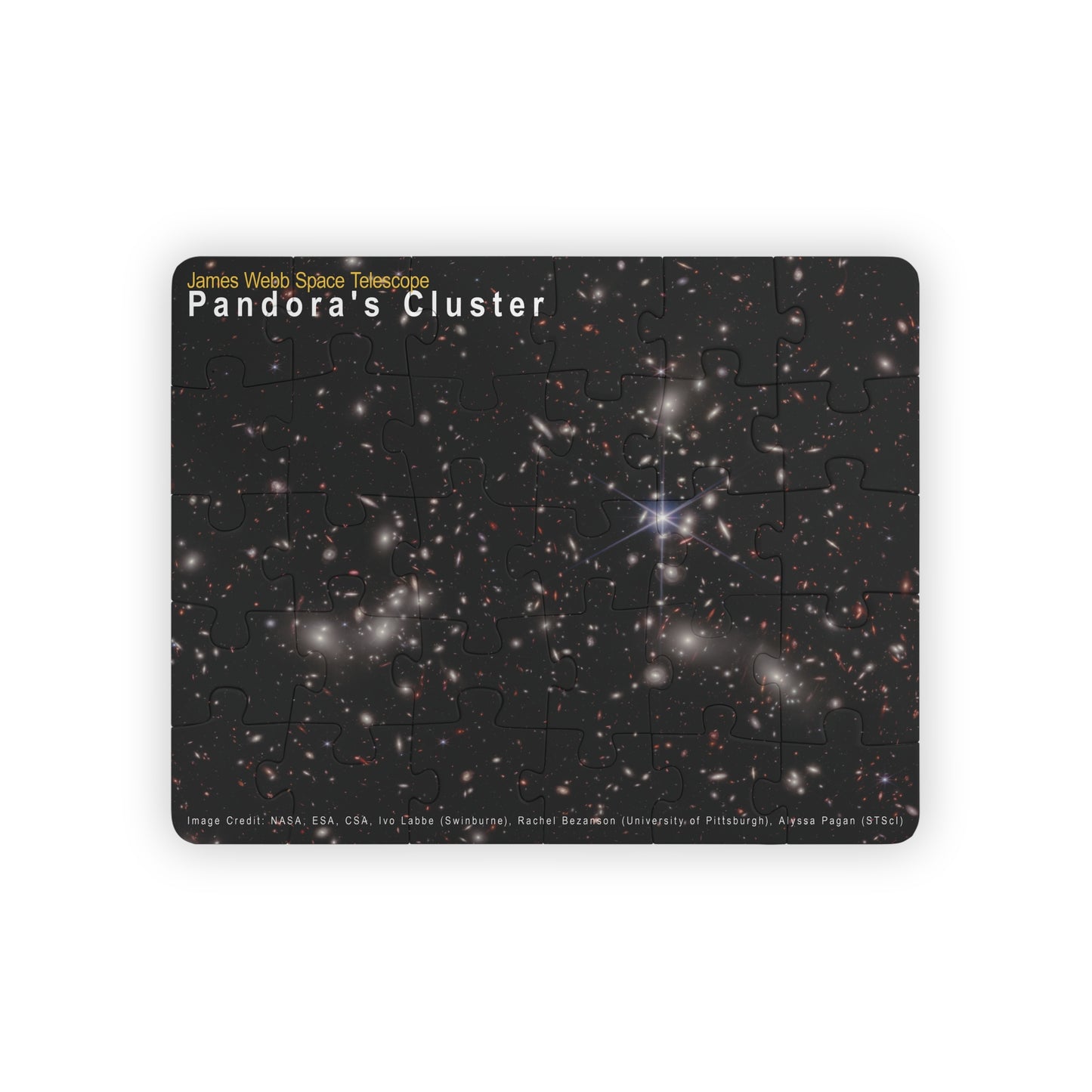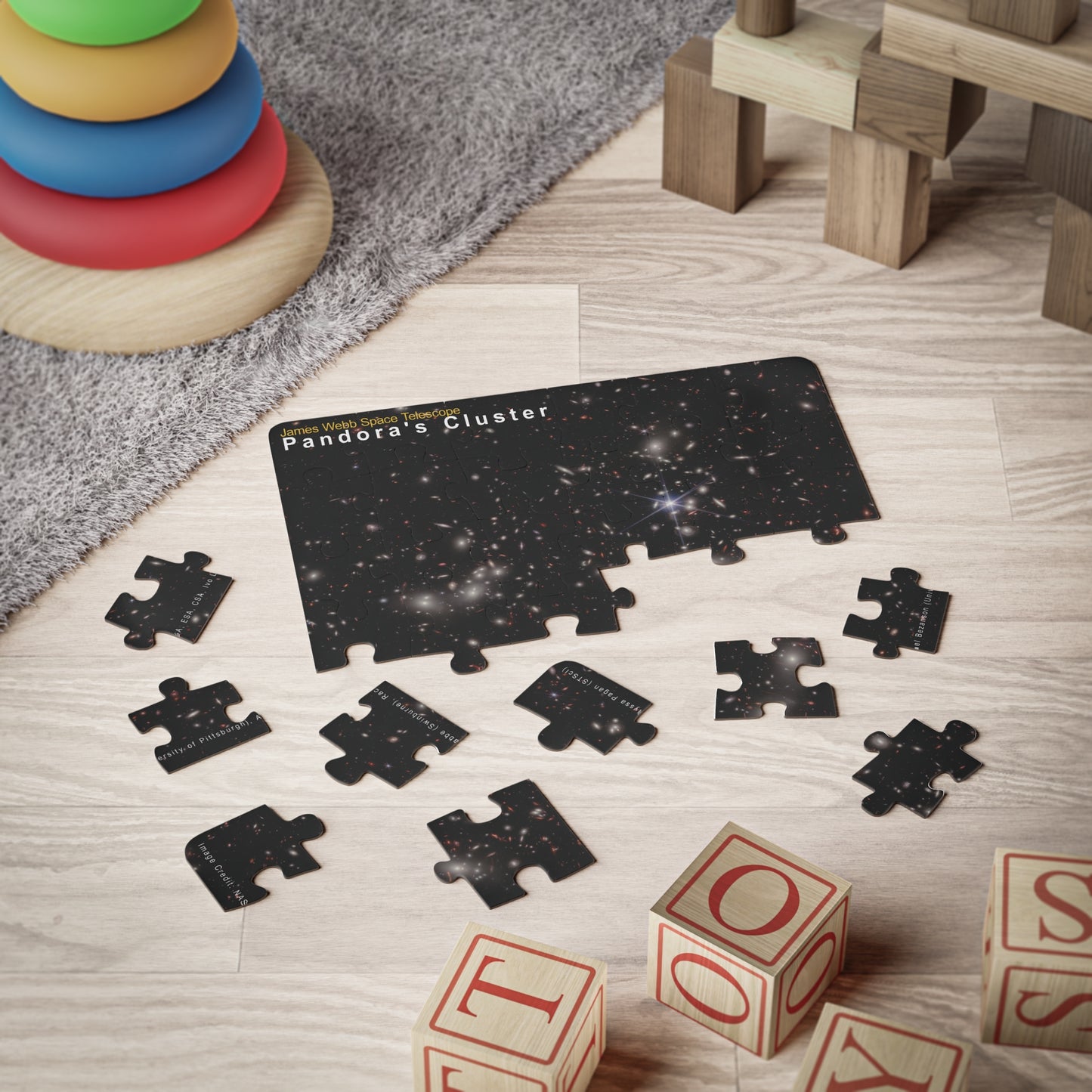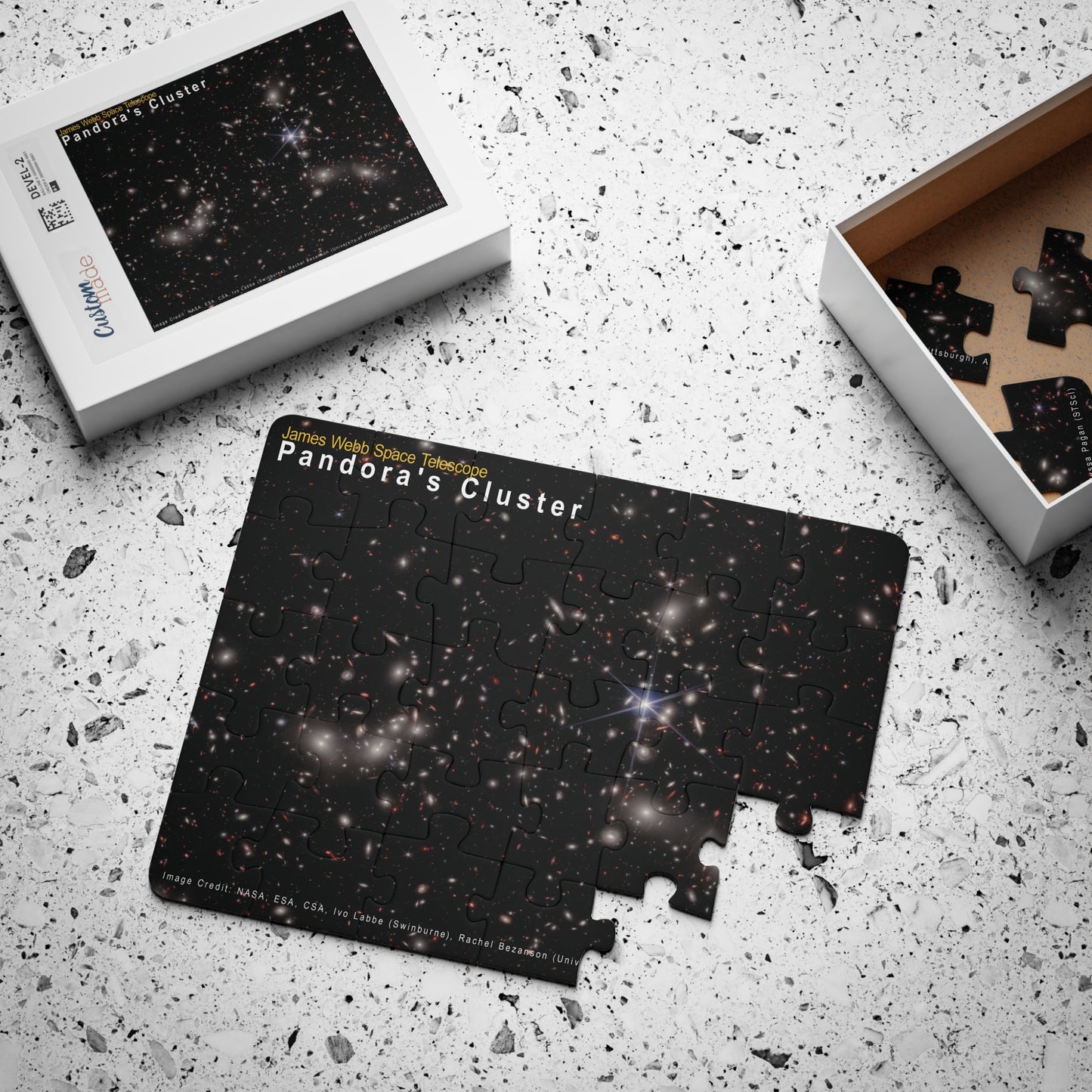Pandora's Cluster, Kids' Puzzle
Pandora's Cluster, Kids' Puzzle
Couldn't load pickup availability
Blast off into learning and fun with our Galaxy Puzzles!
Puzzles are an all-time favorite activity, and with your custom ideas, you can help youngsters have quality time by solving their own personalized kids' puzzle. Each puzzle is available in a toddler-friendly 30-piece pack featuring large pieces and rounded corners for added safety and peace of mind for parents. Each puzzle is made from chipboard and includes a reference photo to aid in solving the problem.
Material: laminated chipboard
One size: 30-piece puzzle - 14" x 11" (35.6 x 28cm)
Rounded corners
Comes in a box with a reference photo
Pandora’s Cluster:
Astronomers estimate 50,000 sources of near-infrared light are represented in this image from NASA’s James Webb Space Telescope. Their light has travelled through varying distances to reach the telescope’s detectors, representing the vastness of space in a single image. A foreground star in our own galaxy, to the right of the image center, displays Webb’s distinctive diffraction spikes. Bright white sources surrounded by a hazy glow are the galaxies of Pandora’s Cluster, a conglomeration of already-massive clusters of galaxies coming together to form a megacluster. The concentration of mass is so great that the fabric of spacetime is warped by gravity, creating an effect that makes the region of special interest to astronomers: a natural, super-magnifying glass called a “gravitational lens” that they can use to see very distant sources of light beyond the cluster that would otherwise be undetectable, even to Webb.
These lensed sources appear red in the image, and often as elongated arcs distorted by the gravitational lens. Many of these are galaxies from the early universe, with their contents magnified and stretched out for astronomers to study. Other red sources in the image have yet to be confirmed by follow-up observations with Webb’s Near-Infrared Spectrograph (NIRSpec) instrument to determine their true nature. One intriguing example is an extremely compact source that appears as a tiny red dot, despite the magnifying effect of the gravitational lens. One possibility is that the dot is a supermassive black hole in the early universe. NIRSpec data will provide both distance measurements and compositional details of selected sources, providing a wealth of previously-inaccessible information about the universe and how it has evolved over time.
Constellation Sculptor
Distance 3.5 billion light-years to cluster
Exposure Dates 2 Nov 2022, 15 Nov 2022
Image: NASA, ESA, CSA, Ivo Labbe (Swinburne), Rachel Bezanson (University of Pittsburgh); Image Processing: Alyssa Pagan (STScI)
Share






